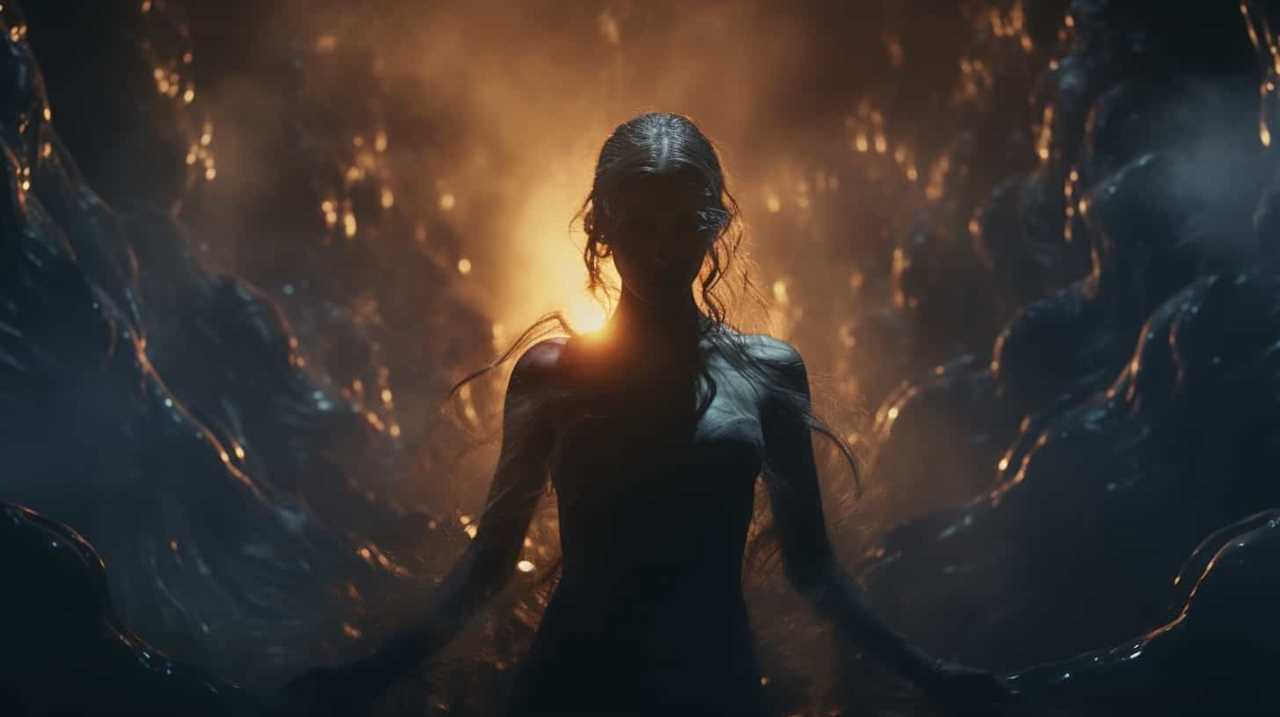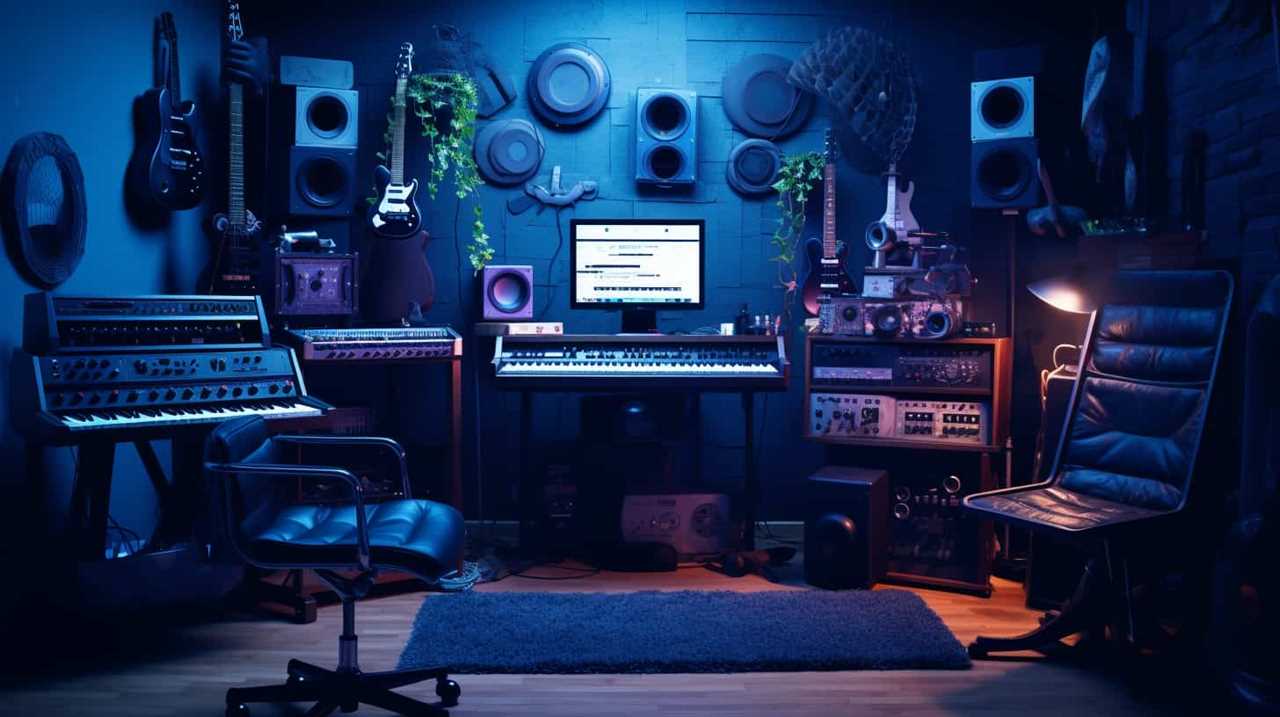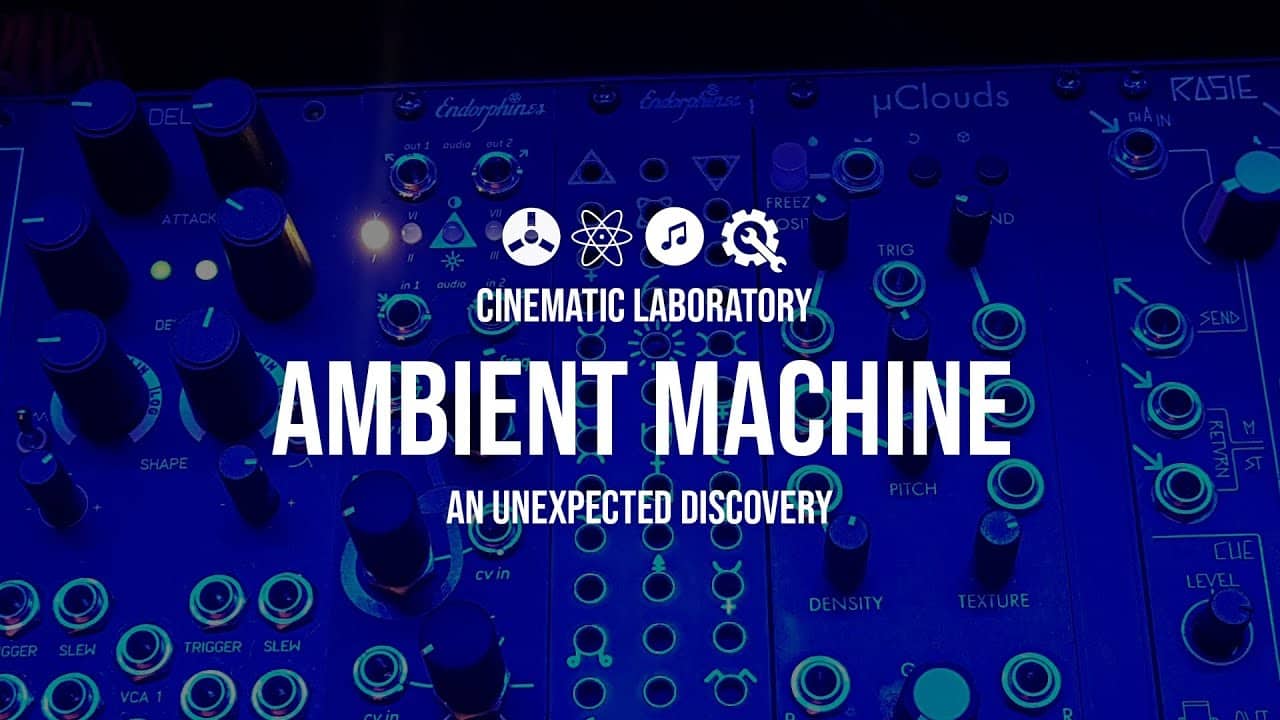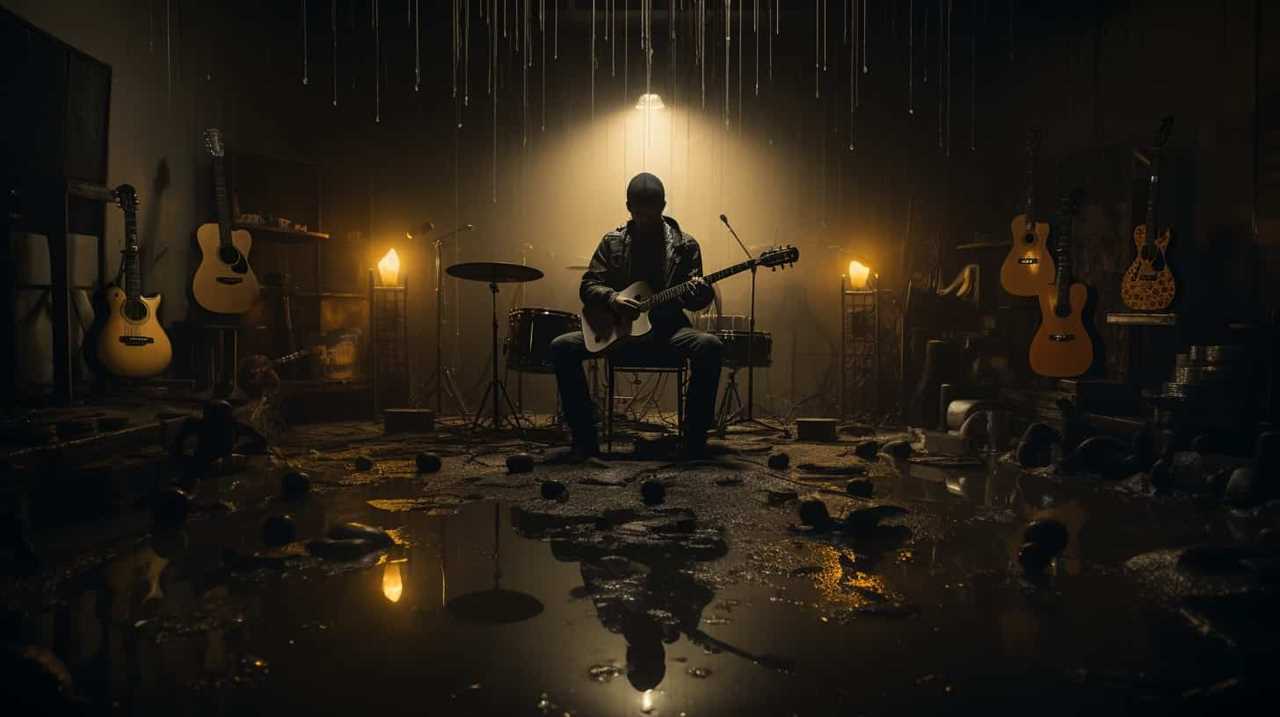
Looking to make some eerie dark ambient music that will give everyone chills? You’ve come to the right place.
In this article, we’ll share 9 expert tips that will take your compositions to the next level.
From exploring chilling chord progressions to incorporating spine-tingling field recordings, we’ll show you how to create an eerie atmosphere that will captivate your listeners.
With unconventional instrumentation and minimalistic techniques, you’ll harness the power of innovation to craft truly haunting melodies.

Get ready to immerse yourself in a world of sonic darkness.
Key Takeaways
- Drones and silence are key tools for creating a haunting atmosphere
- Minor keys and suspended chords add an otherworldly quality to harmonies
- Field recordings bring authenticity and depth to compositions
- Experimenting with unconventional instrumentation adds innovation and intrigue to tracks
Understanding the Role of Atmosphere in Dark Ambient
Now, let’s delve into how atmosphere plays a crucial role in creating the eerie and immersive experience of dark ambient music.
In this innovative genre, we explore the use of drones, which add a haunting layer of sonic depth. These sustained notes create a sense of unease and tension, enveloping the listener in a chilling sonic landscape.
Equally important is the role of silence, as the absence of sound can be just as haunting, leaving room for anticipation and introspection.
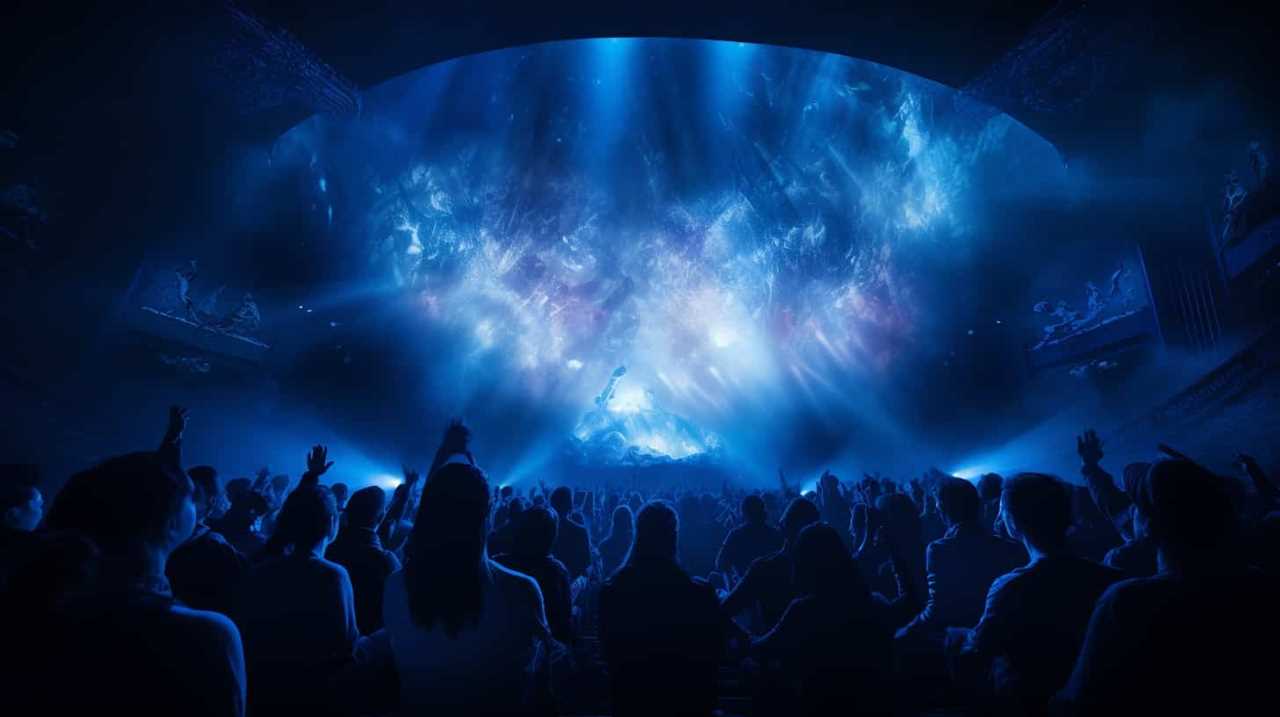
Exploring Chord Progressions for Haunting Harmonies
To truly capture the haunting essence of dark ambient music, we must explore chord progressions that evoke a sense of unease and melancholy. By delving into the depths of minor keys, we can unlock a world of haunting possibilities.
The use of suspended chords adds an otherworldly quality, creating tension and anticipation. These unconventional progressions challenge traditional harmonies, allowing for a unique and innovative sound.
Now, let’s delve further into the realm of dissonance to create a truly spooky atmosphere.
Utilizing Dissonance to Create a Spooky Sound
As we journey deeper into the realm of dark ambient music, we must uncover the secrets of dissonance, for it holds the key to unlocking a truly spine-chilling sound.
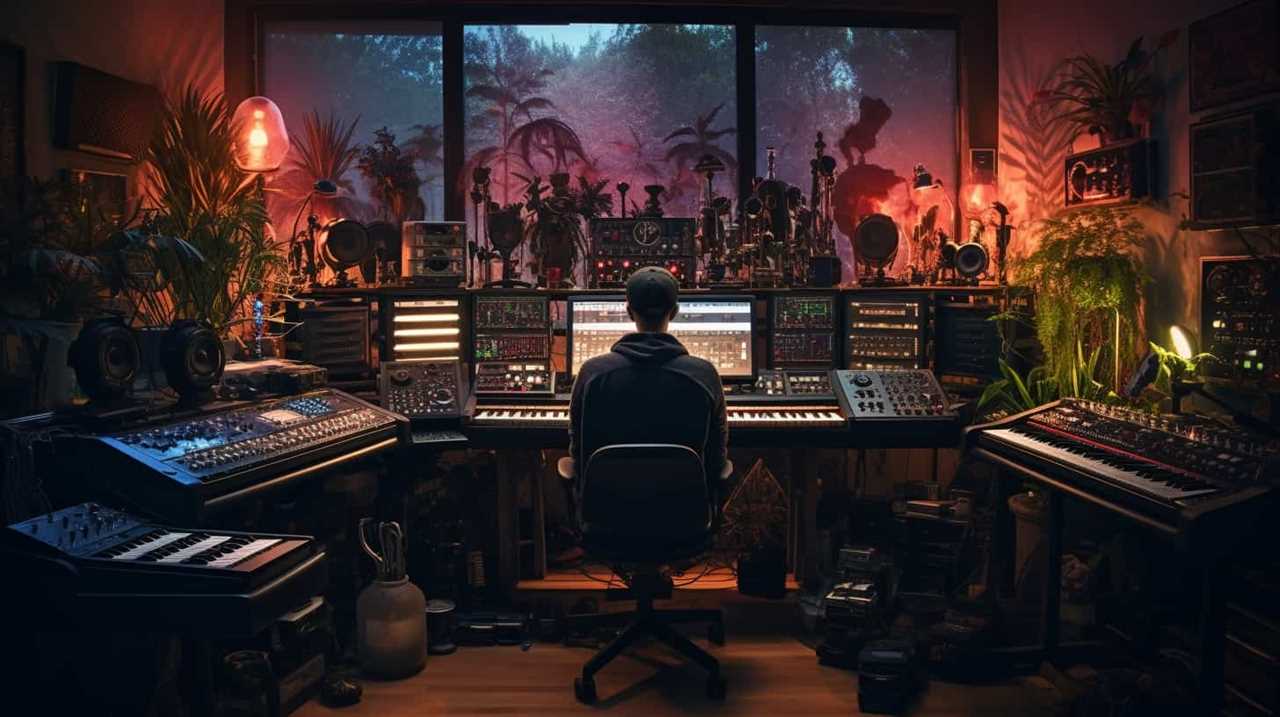
By harnessing the power of dissonant harmonies, we can create an eerie atmosphere that sends shivers down the listener’s spine.
The clash of discordant notes, like ghostly whispers in the night, will haunt their dreams long after the music fades.
Dissonance for Eerie Atmosphere
We’ve found that incorporating a few dissonant notes can add a chilling and unsettling vibe to our dark ambient tracks. Dissonant melodies create tension, keeping our audience on the edge of their seats. It’s like a musical rollercoaster, with unexpected twists and turns that send shivers down our listeners’ spines.
Harnessing Dissonant Harmonies
When it comes to creating a spooky sound, we can harness the power of dissonant harmonies to send shivers down our listeners’ spines. Incorporating dissonance in ambient music is one of the most effective ways to create an eerie and haunting atmosphere.
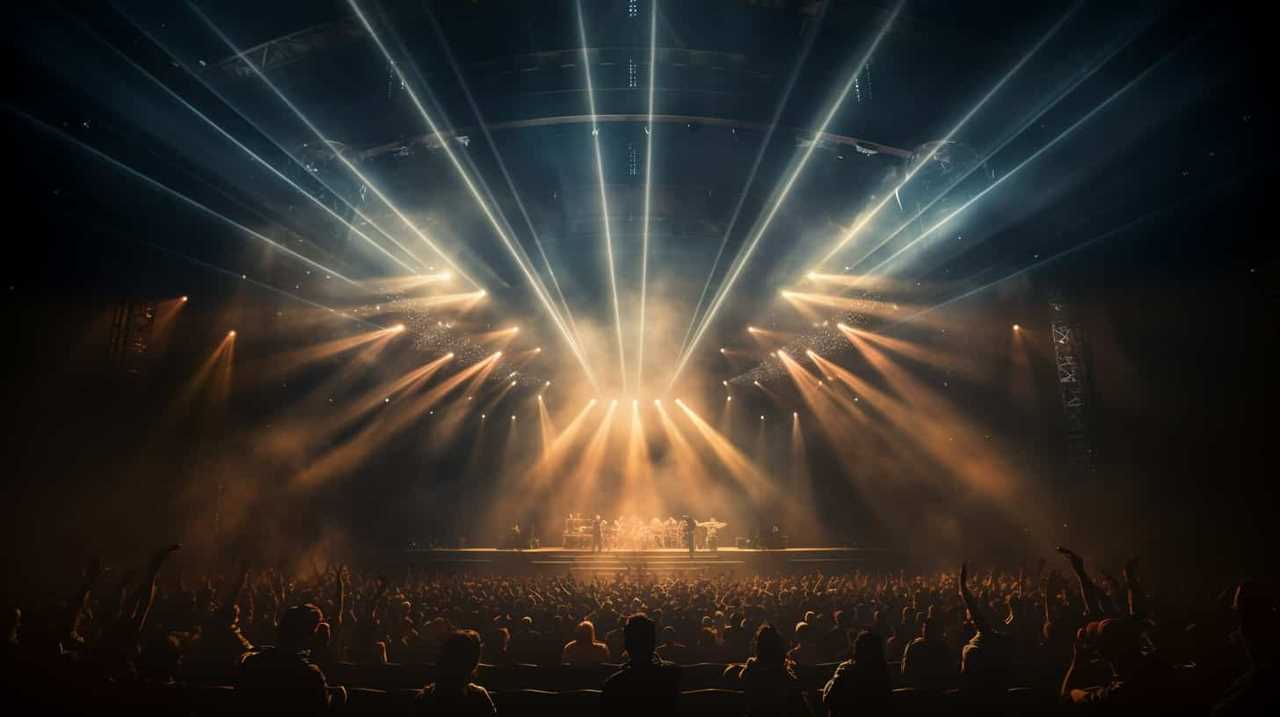
Incorporating Field Recordings for Added Depth
As we delve into the haunting world of dark ambient music, we mustn’t overlook the power of incorporating field recordings.
These recordings, captured from our eerie surroundings, bring a sense of authenticity and depth to our compositions.
Benefits of Field Recordings
We can enhance the depth of our dark ambient tracks by incorporating field recordings into our compositions. The benefits of using field recordings are vast, offering a unique and haunting quality to our music.
Creative Soundscapes With Field Recordings
By incorporating field recordings into our compositions, we can create immersive and captivating soundscapes that transport listeners to otherworldly realms. Transforming everyday sounds into ethereal echoes and ghostly whispers, we add an eerie depth to our music.

The rustle of leaves, the distant cry of a bird, or the gentle rush of a flowing river become haunting melodies that intertwine with our harmonies. Incorporating natural elements, we weave a tapestry of sound that ignites the imagination and invites exploration.
Techniques for Blending Sounds
Blending the eerie echoes and ghostly whispers of our field recordings with our harmonies, we create a haunting depth that resonates within our dark ambient tracks.
This technique allows us to blend melodies seamlessly, intertwining the organic sounds of nature with our atmospheric compositions.
By carefully layering these elements, we create tension and suspense, immersing the listener in a sonic landscape that’s both haunting and innovative.
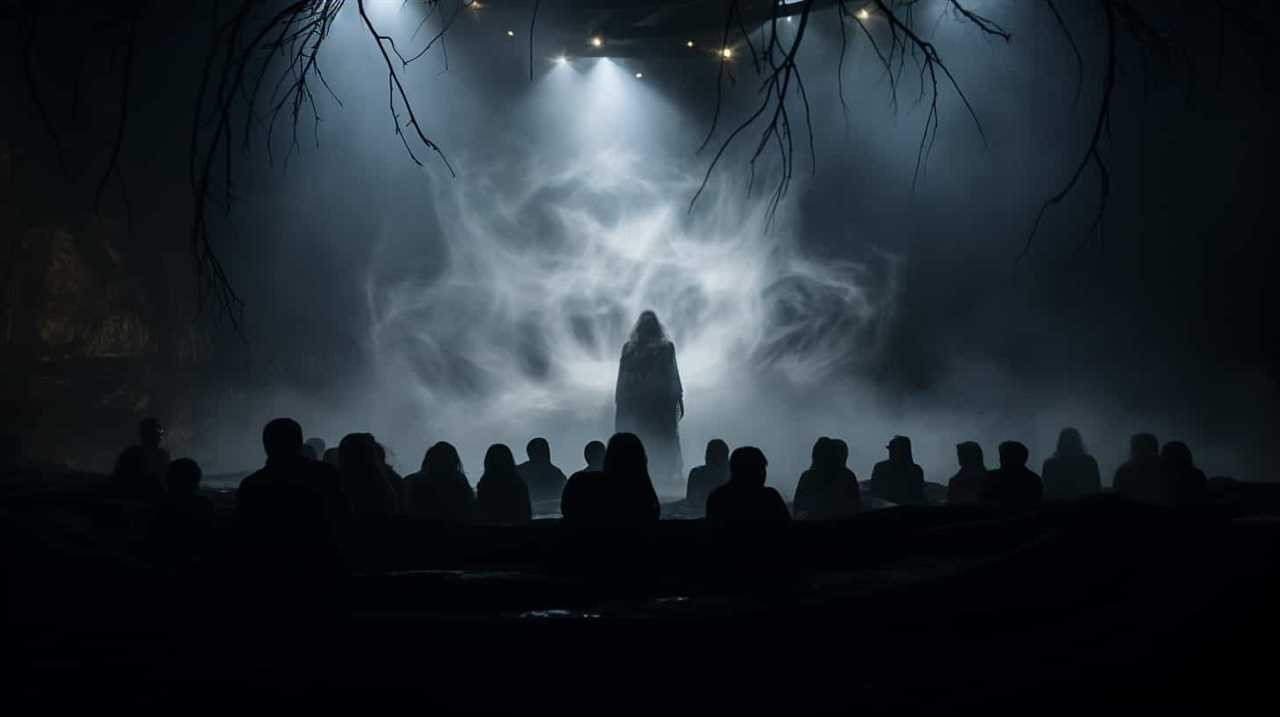
This blending of sounds adds a unique depth to our music, evoking a sense of unease and curiosity.
Experimenting With Unconventional Instrumentation
Our favorite way to explore unconventional instrumentation in our dark ambient tracks is by incorporating unique sound sources such as vintage synthesizers and found objects.
By blending these unusual soundscape combinations, we create an eerie and haunting atmosphere that captivates our listeners.
We push the boundaries of traditional instrumentation, exploring unconventional timbres that add a sense of innovation and intrigue to our music.
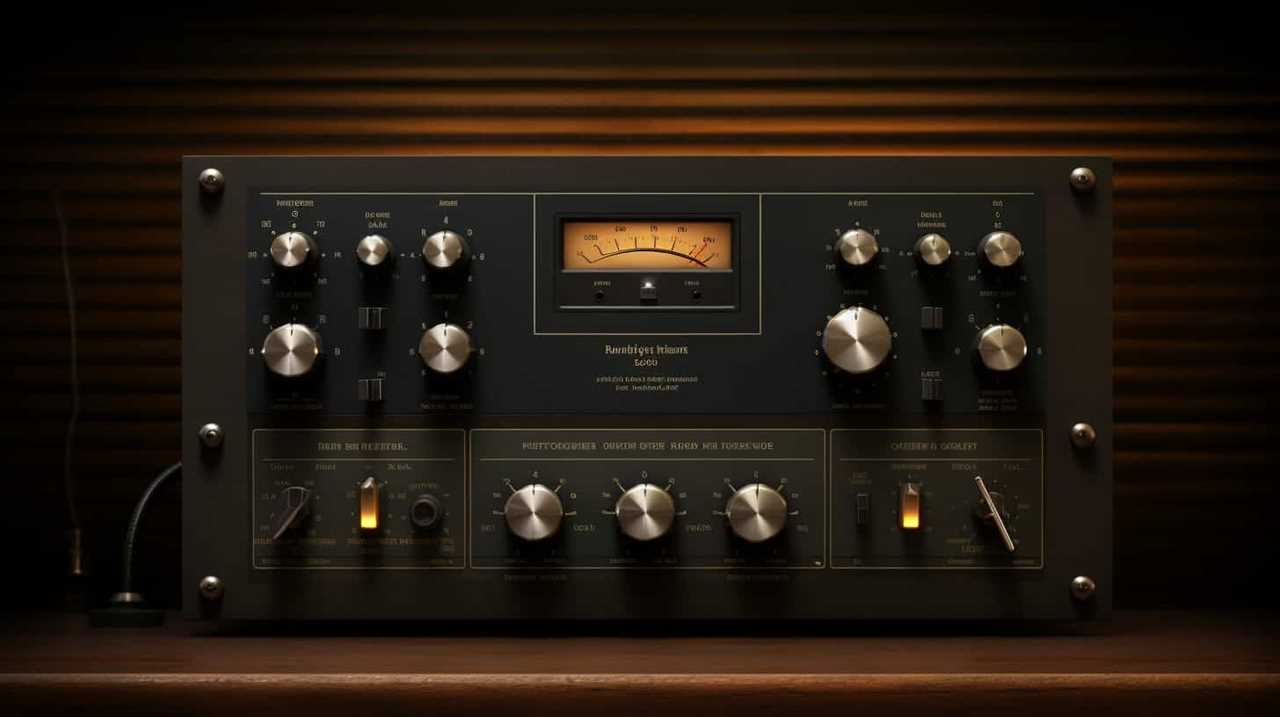
This experimentation allows us to create a truly unique sonic experience that transports our audience to another world.
Creating Haunting Melodies With Minimalistic Techniques
We love to experiment with minimalistic techniques when creating haunting melodies, using repetitive patterns and sparse instrumentation to evoke a sense of otherworldly suspense. Our approach focuses on stripping down the composition to its core elements, harnessing the power of simplicity to captivate listeners.
By employing minimalistic composition techniques, we create tension with silence, allowing the spaces between notes to speak volumes. This deliberate use of restraint heightens the eerie atmosphere, leaving listeners on the edge of their seats. With these techniques, we transport our audience into a haunting sonic realm, where every sound matters.
In the next section, we’ll delve into the art of harnessing the power of repetition and loops to further enhance the haunting quality of our dark ambient tracks.
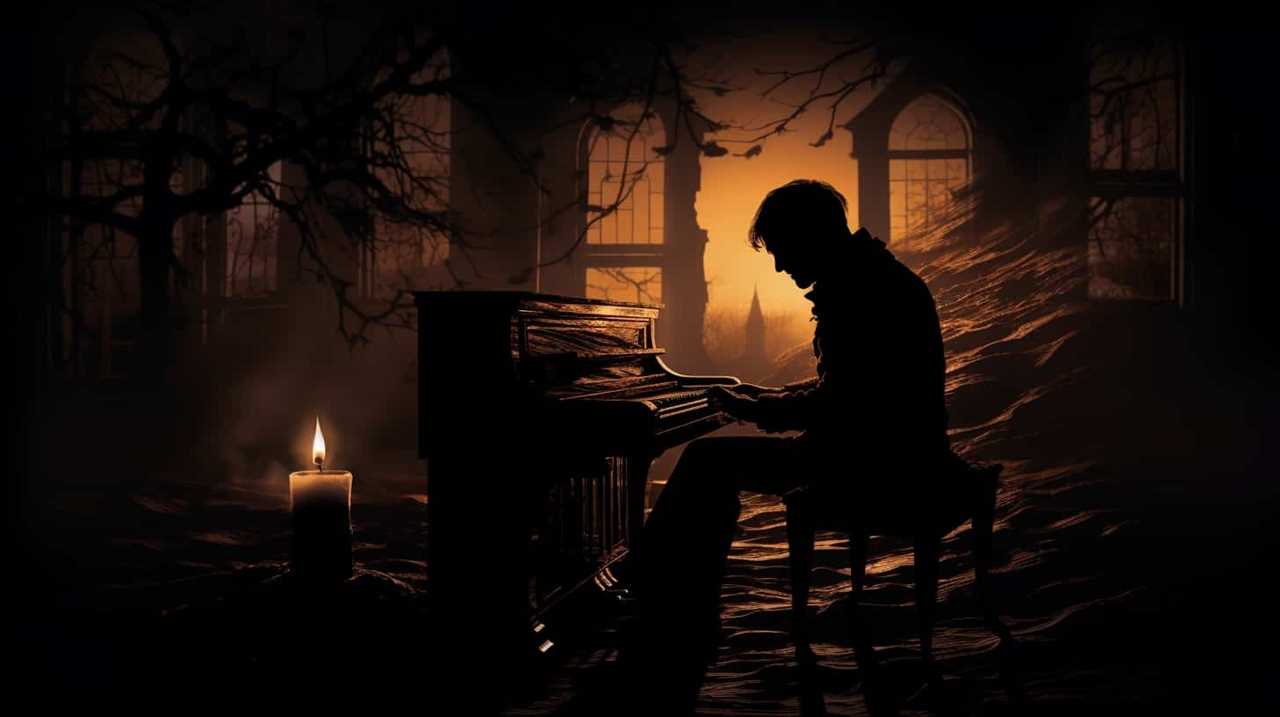
Harnessing the Power of Repetition and Loops
By utilizing repetition and loops, we can create an entrancing and hypnotic quality in our dark ambient tracks. Repetition techniques, such as repeating a melodic motif or a rhythmic pattern, can establish a sense of familiarity and draw the listener deeper into the sonic landscape.
Loop manipulation allows us to stretch, reverse, or layer loops, adding complexity and creating an otherworldly atmosphere. Experiment with different loop lengths and variations to craft a truly haunting and innovative sound.
Using Effects and Processing to Enhance the Eerie Atmosphere
Experimenting with various effects and processing techniques can greatly enhance the eerie atmosphere in our dark ambient tracks.
Here are four ways we can use spectral processing and synthesizers to create haunting and atmospheric drones:
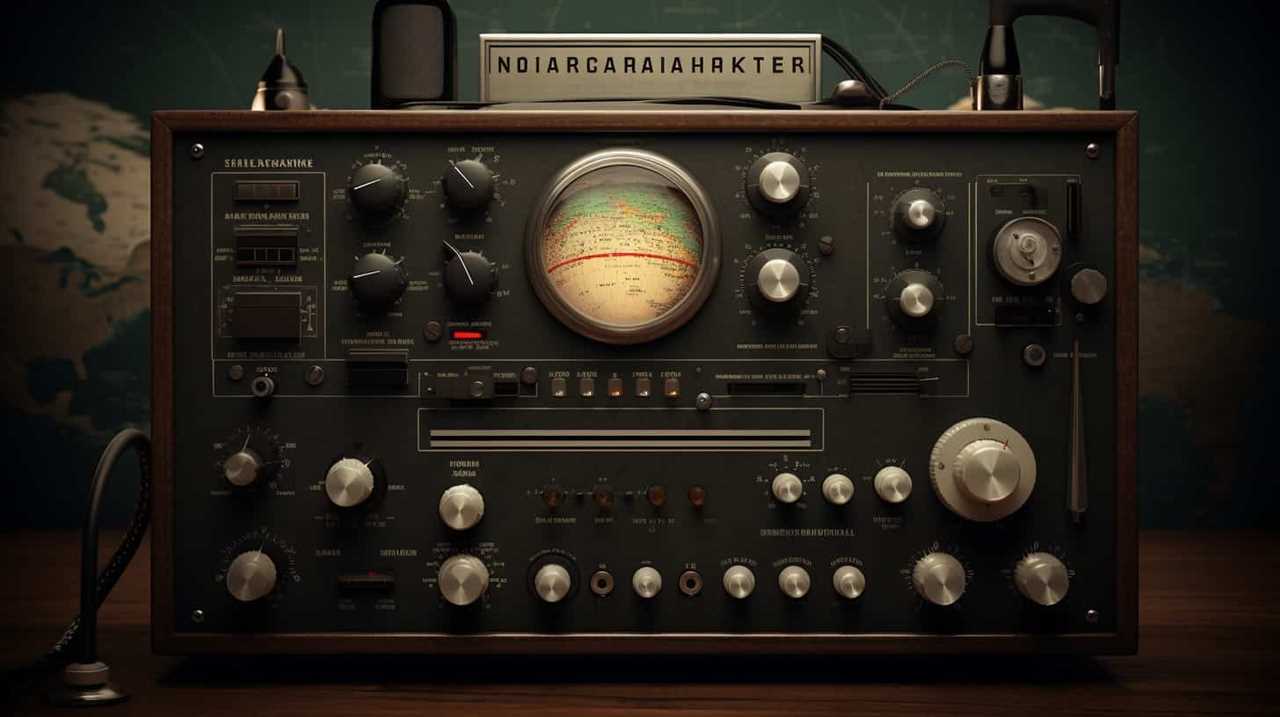
- Manipulate the spectral content of sounds to create otherworldly textures.
- Use granular synthesis to stretch and morph sounds into unsettling timbres.
- Experiment with convolution reverb to add an ethereal and ghostly quality to our tracks.
- Combine multiple layers of atmospheric drones to create a dense and immersive sonic landscape.
By exploring these techniques, we can take our dark ambient tracks to new depths of eerie and haunting soundscapes.
Now, let’s delve into the next section and learn how to balance dynamics and textures for maximum impact.
Balancing Dynamics and Textures for Maximum Impact
As producers, we can achieve maximum impact in our dark ambient tracks by carefully balancing dynamics and textures. Balancing volume and frequency is crucial to create an eerie and atmospheric experience. Layering different textures effectively adds depth and complexity to our compositions, drawing the listener deeper into our sonic world. By skillfully manipulating these elements, we can craft haunting harmonies that push the boundaries of innovation and leave a lasting impression on our audience.
| Balancing Volume | Balancing Frequency | Layering Textures |
|---|---|---|
| Create tension | Enhance realism | Add richness |
| Shape emotions | Evoke unease | Build complexity |
| Establish focus | Invoke curiosity | Generate depth |
| Amplify impact | Heighten suspense | Expand dynamics |
| Command attention | Manipulate perception | Create atmosphere |
Frequently Asked Questions
What Is the Best Way to Choose the Key for a Dark Ambient Track?
When choosing the key for a dark ambient track, we’ve a few tips and techniques that can help create the desired haunting atmosphere.
Exploring different scales is crucial, as certain scales like the Phrygian or Locrian can evoke a sense of darkness and tension.
Experimenting with dissonant harmonies and using unconventional chord progressions can add an eerie and atmospheric quality to the music.
Ultimately, it’s about pushing boundaries and finding unique ways to captivate listeners in the world of dark ambient music.
How Can I Create a Sense of Tension and Unease in My Chord Progressions?
To create a sense of tension and unease in our chord progressions, we explore dissonant intervals and implement unconventional sound design techniques. By experimenting with dissonance, we can introduce a sense of unpredictability and unease.

We can also use unconventional sound design techniques, such as manipulating textures and adding eerie effects, to enhance the haunting atmosphere. These innovative approaches help us craft dark ambient tracks that are truly unsettling and captivating.
Are There Any Specific Field Recording Techniques That Work Well for Adding Depth to a Dark Ambient Track?
Field recording techniques and layering techniques are essential for adding depth to a dark ambient track. By capturing sounds from eerie locations, such as abandoned buildings or dense forests, we create a sonic landscape that evokes a sense of unease.
Layering these recordings with haunting melodies and harmonies further enhances the atmospheric quality of the track, allowing us to transport listeners to a world of innovation and intrigue.
The combination of field recordings and careful layering is key to crafting a truly haunting and immersive dark ambient experience.

Can You Recommend Any Unconventional Instruments That Are Particularly Effective for Creating a Haunting Atmosphere?
Looking to create an eerie atmosphere in your music? Wondering if there are any unconventional instruments that can help you achieve a haunting sound? Well, let’s tell you, there are some truly unique options out there.
From the haunting melodies of the theremin to the unsettling tones of the glass harmonica, these unusual instruments can add a whole new dimension to your tracks. Combine them with innovative techniques for manipulating soundscapes, and you’ll be creating spine-chilling music in no time.
How Can I Ensure That My Minimalistic Melodies Are Still Engaging and Captivating to the Listener?
When creating our minimalistic melodies, we strive to ensure they remain engaging and captivating to our listeners. We experiment with unconventional instruments and techniques to achieve an eerie and haunting atmosphere.
Conclusion
In the chilling realm of dark ambient music, crafting haunting harmonies is an artform that requires careful attention to atmosphere, chord progressions, dissonance, and unconventional instrumentation.
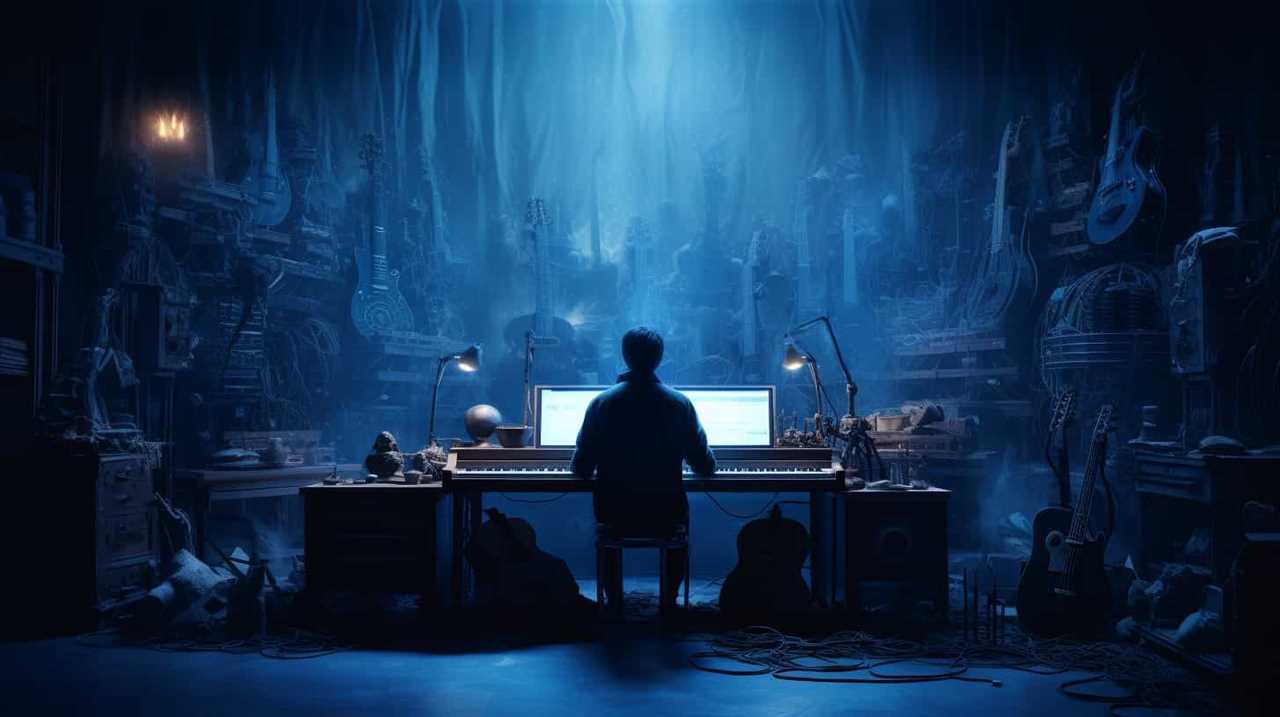
By incorporating field recordings, minimalistic techniques, repetition, and the right effects and processing, musicians can create an eerie and atmospheric sound that captivates the listener’s imagination.
So, are you ready to immerse yourself in the haunting melodies and unsettling textures of dark ambient music?

